Gastroenterological Intervention

Salivary diagnostics for cancer using multi-omics technologies
We are developing a completely non-invasive approach to detecting cancer risk, concentrating initially on oesophageal cancer.

Are extra-hot spicy snacks dangerous?
After rapper Lil Xan claimed he had been hospitalised due to flamin' hot Cheetos, Noisey UK (VICE) spoke to Prof. Laurence Lovat about the safety of spicy snacks.
Our work
At GENIE, we have pioneered endoscopic therapy for pre-cancerous changes and early cancer of the oesophagus. We introduced both HALO radiofrequency ablation (RFA) for dysplastic (pre-cancerous) Barrett's oesophagus to the UK, and we now head the largest registry of this treatment in Europe.
We also develop endoscopic diagnostic and therapeutic tools, including diagnostic imaging, ‘virtual’ biopsy, biomarkers of cancer risk and a range of novel therapies. We collaborate widely with leading research and patient groups worldwide to develop these new ideas.
- Saliva to predict risk of disease using transcriptomics and epigenetics (SPIT)
A study to help to create a cheap, portable and quick bedside test that uses patients’ saliva to predict their risk of disease.
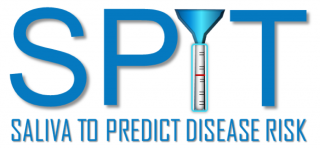
Background
In the UK, there are numerous lifestyle-altering diseases (such as oesophageal and colorectal cancer) for which patients undergo multiple invasive tests before they can be properly diagnosed. Patients with long term gastrointestinal conditions such as ulcerative colitis and Crohn's disease are at increased risk of gastrointestinal cancers and undergo regular surveillance tests. These tests are often uncomfortable and inconvenient for patients, as well as being costly for the NHS. This study will analyse symptoms, risk factors and genetic changes detected in saliva samples to predict patients' risk of developing diseases.
What does it involve?
- Participants complete a questionnaire to obtain information about their symptoms and risk factors for the disease.
- Saliva, blood samples and tissue samples are collected.
- Genetic analysis is performed on these samples to see if the characteristics of the patients’ saliva in combination with symptoms and other risk factors can accurately predict their disease.
What is the aim?
The results may help to create a cheap, portable and quick bedside test that uses patients' saliva to predict their risk of disease. This will save low-risk patients from invasive and unpleasant examinations and could save the NHS millions of pounds. Only high-risk patients would need to undergo invasive investigations so that they can be treated early if needed.
- Sponsor: University College London
- Funding: Rosetrees Trust (UK), CORE Digestive Disorders Foundation (UK)
- Ethical Approval: Coventry and Warwickshire Regional Ethics Committee (17/WM/0079)
Collaborating sites
1. University College Hospital, London
2. Guy's and St Thomas' Hospitals, London
3. Lister Hospital, Stevenage
4. Frimley Park Hospital, Frimley
5. Wexham Park Hospital, Slough
6. Worthing and St Richard’s Hospitals, Western Sussex
7. Princess Alexandra Hospital, Harlow
8. Royal Albert Edward Infirmary, Wigan
9. Royal Surrey County Hospital, Guildford
10. Shrewsbury and Telford Hospital NHS Trust11. Russell’s Hall Hospital, Dudley
12. Tameside and Glossop Integrated Care NHS Foundation Trust
13. Medway NHS Foundation Trust
14. Barking, Havering and Redbridge University Hospitals NHS Trust
15. Belfast Health and Social Care Trust
16. University Hospitals Of Leicester NHS Trust
17. London North West University Healthcare NHS Trust
18. Manchester University NHS Foundation Trust
19. County Durham & Darlington NHS Foundation Trust
20. Surrey and Sussex Healthcare NHS TrustSPIT Study Team
- Chief Investigator: Prof Laurence Lovat (l.lovat@ucl.ac.uk)
- Clinical Trials Coordinator: Aine Hogan (aine.hogan@ucl.ac.uk)
- Research Fellow: Dr Alex Ho (alexander.ho@ucl.ac.uk)
Contact
- Email: dsis.spit@ucl.ac.uk
- Telephone: 020 3108 7859
Related publications
Rosenfeld A, Graham DG, Jevons S, et al. Development and validation of a risk prediction model to diagnose Barrett's oesophagus (MARK-BE): a case-control machine learning approach. Lancet Digit Health. 2020 Jan 1;2(1):E37-E48.
- Duodenal Mucosal Resurfacing
UCLH will be one of the first centres in the world involved in an exciting new trial to treat poorly-controlled type 2 diabetes with an endoscopic procedure called duodenal mucosal resurfacing (DMR).
What is the procedure?
New research shows that hormones produced in the intestines have a strong effect on blood sugar levels and that type 2 diabetes may be a disease of the digestive tract. The DMR procedure is a new investigational therapy for type 2 diabetes that targets the area of the small intestine called the duodenum where absorption of nutrients begins and hormones that control blood sugar levels are produced. The DMR procedure safely alters the inner surface of the duodenum to change how your body absorbs and processes sugar from your diet. In doing so, it may be possible to improve control of your blood sugar.
How is it performed?
- It introduces a flexible camera through the mouth (called an endoscope) to pass through the stomach and into the small intestine. This procedure is called an upper endoscopy.
- With the endoscope, catheters are introduced through the mouth into the small intestine to treat the lining of duodenum with a heated balloon at the end of the catheter.
- This thermal treatment modifies the cells along the surface of the duodenum that are responsible for absorbing glucose and releasing hormones into the body that affect glucose control.
What can I expect during / after the procedure?
The DMR procedure is performed under sedation after an overnight fast and takes around 90 minutes. You will be closely monitored and may be asked to stay in the hospital overnight before being discharged home. Some dietary modifications will be prescribed for two weeks thereafter.
The REVITA-1 clinical trial is evaluating the safety and potential benefits of the DMR procedure.
You may be eligible to participate if you meet the following criteria. Your doctor can review all inclusion criteria with you.
- Elevated HbA1c (7.5% - 11%)
- Presence of type 2 diabetes for < 10 years
- Taking at least one oral glucose lowering medication for at least 3 months
- Not currently taking any injectable glucose-lowering agent
- 28 to 75 years old
- BMI between 24 and 40
After the procedure, you will be asked to visit your doctor periodically for three years to check your progress.
Contact
The trial at UCLH is being run by Dr Rehan Haidry, Consultant Gastroenterologist and Director of Endoscopy together with Dr Rachel Batterham, Consultant Endocrinologist, Head of UCLH Obesity & Bariatric Services and Head of the Centre for Obesity Research.
- Email: RevitaTrial@uclh.nhs.uk
- Telephone: 07572 130 166
- HALO Radiofrequency Ablation Registry
UCLH is the lead UK centre for this Registry, which maps outcomes for patients undergoing this novel therapy to treat Barrett's oesophagus. There are currently 27 hospitals across the UK and Ireland who are contributing to the Registry.
What is the HALO RFA?
HALO Radiofrequency ablation (RFA) is a new treatment, which uses radio waves to destroy the dysplasia (abnormal changes). It can also be used to treat the entire area of Barrett's oesophagus. The treatment is applied during an endoscopy and patients go home the same day.
How is it performed?
Patients are given a sedative and a tiny probe is used to deliver the radio waves to heat and rapidly remove the affected parts. It takes about 45 minutes. This treatment is usually repeated three or four times at intervals of two to three months until the dysplasia and the entire Barrett's oesophagus has been removed.
What can I expect during / after the procedure?
The outcomes of this treatment for dysplasia look promising. Approximately 80-90% of patients have reversal of the dysplasia at the end of the course of treatment, which usually takes a few months to complete. It is still a new treatment and doctors need to establish how long the benefits last. For this reason, all patients having the treatment need follow-up endoscopies long-term to ensure they remain well. We have set up the UK HALO Registry to monitor outcomes and are currently inviting all patients to join this study.
The risk of developing oesophageal 'heartburn cancer' is high for people with Barrett's oesophagus and high-grade dysplasia (badly formed pre-cancerous cells), at about 10% per year, with half of all patients developing cancer in around five years. This means that half of these people will not develop cancer in five years. This needs to influence your decision about whether or not to have treatment. People with low-grade dysplasia have a risk that is rather lower, at around 5% per year.
All people with dysplasia arising in Barrett's oesophagus should be referred to a specialist centre where their case is discussed by a multidisciplinary team of doctors. Patients may then be referred for this treatment. All the major UK centres are part of the UK Registry and patients should therefore be invited to enter their information anonymously into the Registry. There are no special requirements for entering this study.
Participants
There are lead investigators at every participating hospital.
London
- University College London Hospital - Prof Lovat, Dr Haidry, Dr Banks, Dr Sweis
- St Mary's Hospital, London - Dr Jonathan Hoare, Dr Natalie Direkze
- Guy’s & St Thomas’ Hospital - Dr Jason Dunn
England
- University Hospital Aintree - Dr Neil Kapoor
- Royal Bournemouth and Christchurch Hospital - Dr Charles Gordon
- Gloucestershire Royal Hospital - Prof Hugh Barr
- Manchester Royal Infirmary - Dr Robert Willert
- Queen Alexandra Hospital, Portsmouth - Dr Pradeep Bhandari
- Royal Liverpool University Hospital - Dr Howard Smart, Dr Andrew Moore
- Southampton University Hospital - Dr Praful Patel, Dr Phil Boger
- Bradford Teaching Hospital - Dr Pradeep Mundre
- Queen Elizabeth Hospital, Birmingham - Dr Brinder Mahon
- Addenbrookes Hospital, Cambridge - Dr Fitzgerald, Massimiliano Di Pietro
- Frimley Park Hospital - Dr Susannah Woodrow
- Royal Wolverhampton Hospitals NHS - Dr Andrew Vietch
- Norfolk & Norwich University Hospital - Mr Edward Cheong
- Salford Royal NHS Foundation Trust - Dr Yeng Ang
- Nottingham University Hospital NHS Trust - Prof Ragunath, Dr Ortiz Fernandez
- County Durham & Darlington NHS Foundation Trust - Dr Anjan Dhar
- Watford Hospital - Dr Anthony Leahy
- Newcastle Hospitals - Dr David Nylander
- John Radcliffe Hospital, Oxford - Dr Barbara Braden
- Plymouth Hospital NHS Trust - Dr Sean Cochran
- Broomfield Hospital, Chelmsford - Mr Venkatesh Jayanthi
Scotland
- Glasgow Royal Infirmary - Dr Grant Fullarton, Jonathan Morris
- Royal Infirmary, Edinburgh - Dr Ian Penman
Ireland
- St James, Dublin - Mr Ravi, Dermot O'Toole
Contacts
The study is being run nationally by Prof. Laurence Lovat and Dr Rehan Haidry.
- Email: Rehan.Haidry@uclh.nhs.uk
- Telephone: 0203 447 7488
The Gastroenterological Intervention Centre

Head: Prof. Laurence Lovat
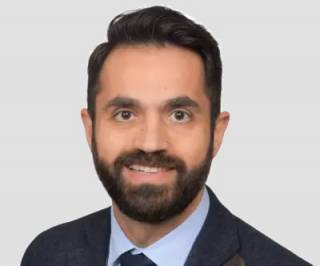
Dr Sarmed Sami

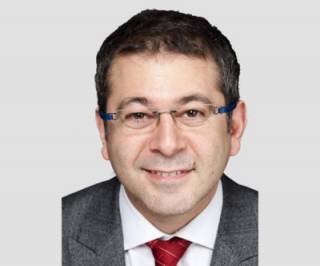
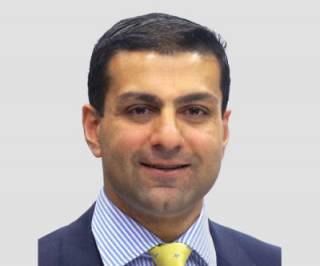
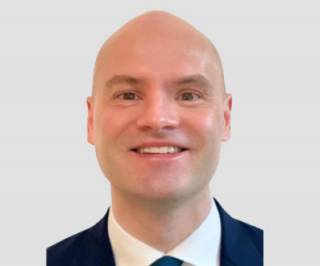
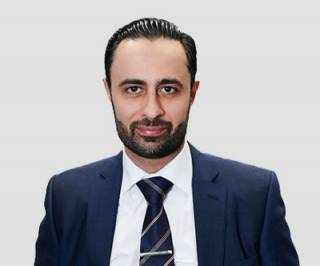
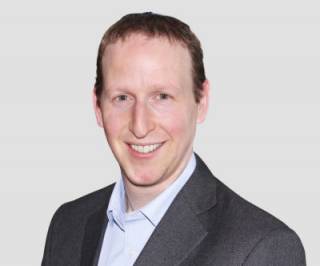
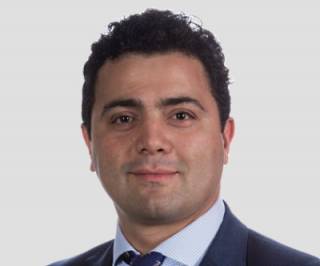
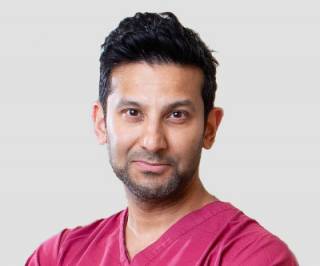

Select publications
- Banks, M., Lipman, G., Sehgal, V., Lovat, L.B., Haidry, R., et al (2022). A new artificial intelligence system successfully detects and localises early neoplasia in Barrett's esophagus by using convolutional neural networks. United European Gastroenterology Journal.
- Evans, J.A., Carlotti, E., Lin, M.L., Hackett, R.J., Lovat, L.B., et al. (2022). Clonal transitions and phenotypic evolution in Barrett esophagus. Gastroenterology.
- Wolfson, P., Ho, K.M.A., Lipman, G., Haidry, R., Lovat, L.B., et alia (2022). Endoscopic eradication therapy for Barrett's Esophagus related neoplasia. A final 10-year report from the United Kingdom National Halo Radiofrequency Ablation Registry. Gastrointestinal Endoscopy.
- Van Berkel, N., Opie, J., Ahmad, O.F., Lovat, L.B., Stoyanov, D. & Blandford, A. (2022). Initial Responses to False Positives in AI-Supported Continuous Interactions: A Colonoscopy Case Study. The ACM Transactions on Interactive Intelligent Systems, 12 (1), ARTN 2.
- Soares, A.S., Bano, S., Clancy, N.T., Stoyanov, D., Lovat, L.B., & Chand, M. (2022). Multisensor perfusion assessment cohort study: Preliminary evidence toward a standardized assessment of indocyanine green fluorescence in colorectal surgery. Surgery.
- Everson, M. A., Herrera, LCGP., Wang, H-P., Haidry, R.J., Lovat, L.B., et al. (2021). A clinically interpretable convolutional neural network for the real time prediction of early squamous cell cancer of the esophagus: comparing diagnostic performance with a panel of expert European and Asian endoscopists. Gastrointest Endosc.
- Wolfson, P., Ho, K.M.A., Bassett, P., Haidry, R., Olivo, A., Lovat, L.B., & Sami, S.S. (2021). Accuracy of clinical staging for T2N0 oesophageal cancer: systematic review and meta-analysis. Diseases of the Esophagus, 34 (8), ARTN doab002.
- Telese, A., Sehgal, V., Magee, C.G., Naik, S., Alqahtani, S.A., Lovat, L.B. & Haidry, R.J. (2021). Bariatric and Metabolic Endoscopy: A New Paradigm. Clinical and Translational Gastroenterology, 12 (6), e00364.
- Kader, R., Mejias, A., Hebbar, S., Brandao, P., Sehgal, V., Lovat, L.B., et al. (2021). Computer aided characterisation of colorectal polyps using artificial intelligence. Gut 2021;70:A27-A28
- Rosenfeld A., Graham D.G., Jevons S., Sami, S.S., Lovat, L.B., et al. Development and validation of a risk prediction model to diagnose Barrett's oesophagus (MARK-BE): a case-control machine learning approach. Lancet Digit Health. 2020 Jan 1;2(1): E37-E48.
 Close
Close

